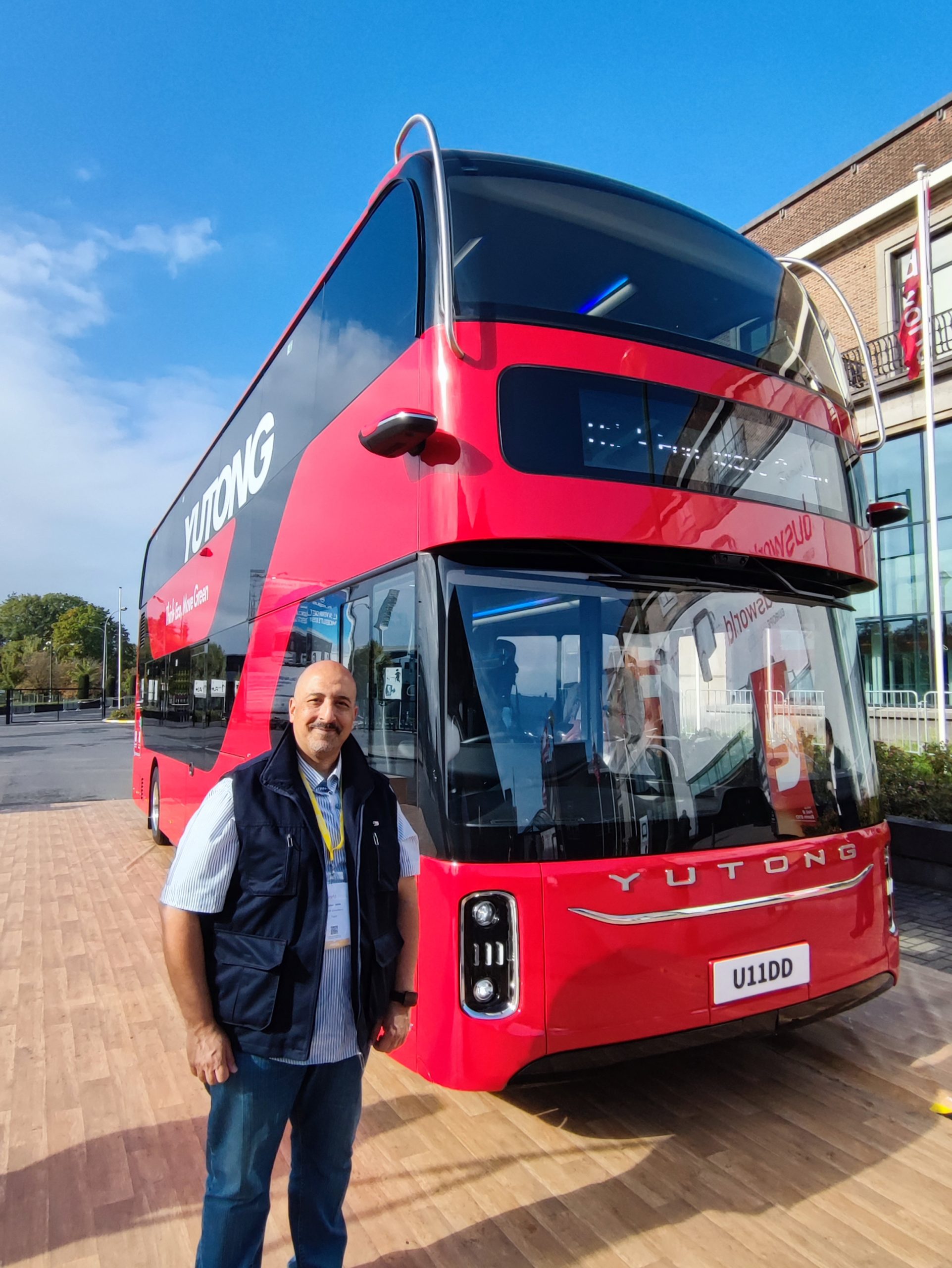
(Notes Beyond the Events!!) ..
Article by: Ashraf Kara
My recent visit to the global “Busworld Europe 2025” exhibition last week wasn’t by no means an ordinary one — not merely because of the exceptional and sometimes unexpected presentations and advanced models unveiled during the exhibition days, nor because of the large number of press conferences held throughout its first three days. Rather, it was for the some observations I found noteworthy and worth attention, such as:
• The official launch of a hydrogen-powered bus by the renowned Egyptian bus manufacturer MCV (Manufacturing Commercial Vehicles). The idea of introducing a hydrogen-fueled city bus is not entirely new, but MCV’s initiative in taking this step marks a significant milestone on several levels — even if it is initially aimed at the European market. The question arises: will the Egyptian government adopt this forward-looking vision (perhaps in the near future), especially as Egypt prepares to become a regional hub for producing and exporting green hydrogen in the Suez Economic Zone?
I can only recall my conversation six years ago with Eng. Karim Ghabbour during the 2019 edition of the exhibition, when I asked him: “Why haven’t you moved quickly to produce electric buses?” His reply was that they saw greater potential in natural gas, particularly given the government’s initiative toward natural gas conversion projects. Yet, just a few years later, MCV went on to add a factory for Volvo electric buses assembling for export, alongside many local projects using its electric buses — such as the BRT (Bus Rapid Train) system.
• The growing trend among several major car manufacturers to enter the bus industry. Among the striking examples were MG, VINFAST, and ŠKODA, all of which have expanded into bus manufacturing as part of a broader industrial vision that recognizes the strategic importance of public passenger transport. This naturally raises a question: why doesn’t the Egyptian government increase its focus on the manufacturing of public transport vehicles and their feeder industries, rather than concentrating primarily on deepening passenger car production?
Indeed, Egypt has made major progress in public transport systems — such as the metro, light rail train (LRT), the upcoming monorail, and the new BRT on the Ring Road — yet prioritizing the manufacturing of public transport vehicles, particularly electric buses, would be far more beneficial. This is especially important given Egypt’s high population growth, the flexibility of bus networks compared to fixed-track systems, and the rising cost of car ownership relative to declining individual income levels.
• A refined gesture by the European Transport Media Committee — an independent, non-governmental group — which I witnessed during the official opening ceremony of the exhibition. The committee honored the SETRA tourist coach as “The Best Coach Tested for 2026.” During the ceremony, the committee’s Norwegian chairman announced that he would voluntarily step down after seven years in the position, passing leadership to an Italian colleague to continue the committee’s positive work.
This noble example made me recall the unfortunate contrast within Egypt’s Automotive Journalists Association, an organization I once wished to establish — on the condition that I would not serve as its president, but rather as the official responsible for local and international relations. Yet, the scramble for positions among some colleagues and their eagerness to extract personal gain from such a body completely derailed the idea at its inception.
There are, indeed, countless other observations that could impose themselves upon the scene at such international events.
But the lingering question remains: is there anyone who truly understands what notes beyond the events?

Recent Comments